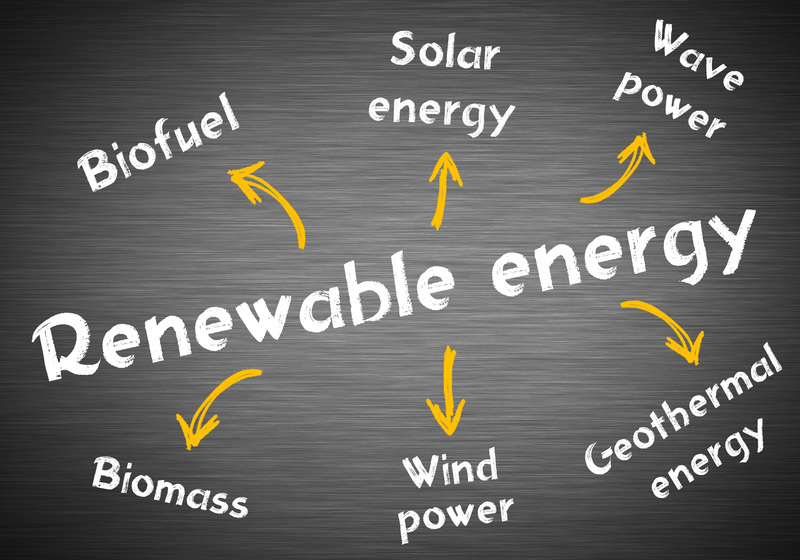Working Green: Practical Tips to Slash Office Waste
Working green isn't just a buzzword--it's an actionable approach to creating more sustainable workplaces. Offices, regardless of size or industry, are notorious for generating significant amounts of waste, from paper and plastic to electronics and food scraps. If you're looking to slash office waste while maintaining productivity and morale, you've come to the right place. In this guide, we'll delve into actionable, creative, and proven ways to reduce waste, create eco-friendly office habits, and encourage a greener work culture.
Why Should Offices Prioritize Green Practices?
The modern office is a powerhouse of productivity, but it can also be a significant source of environmental damage. Landfills are filled with office supplies, e-waste, disposable cups, outdated electronics, and more. Implementing eco-friendly solutions not only benefits the planet but also often reduces costs and enhances a company's reputation. A sustainable workplace can even improve team morale and foster a sense of purpose. In fact, multiple studies show employees are more engaged when they feel their work positively impacts the environment.

The Biggest Contributors to Office Waste
Understanding what's filling up your bins is the first step to reducing office waste. Some of the main culprits include:
- Paper waste: Reports, memos, printouts, sticky notes, and junk mail
- Single-use plastics: Coffee cups, water bottles, utensils, food containers
- Food scraps: Leftover lunches, spoiled snacks, coffee grounds
- Packaging materials from office supplies and deliveries
- Electronics: Obsolete computers, cables, batteries, printers
- Cleaning and maintenance products
How to Slash Office Waste: Practical Green Office Tips
1. Conduct a Waste Audit
A waste audit is your compass for going green at work. Evaluate your trash bins and recycling containers for a week to identify the main types of waste produced. This data-driven approach helps set goals and measure progress as you transform towards a greener workspace.
2. Minimize Paper Usage
- Go digital with documents: Move internal communications, invoices, and memos to cloud-based systems like Google Drive or Dropbox.
- Think before printing: Encourage employees to print only what's necessary and default to double-sided printing.
- Invest in the right tech: Use document management software to keep files organized and reduce the need for hard copies.
- Set up a "scrap paper" station for jotting quick notes instead of using fresh sheets.
3. Rethink Office Supplies
- Buy in bulk: Purchasing office materials in bulk minimizes packaging waste and saves money.
- Choose supplies with minimal or recyclable packaging. Seek eco-friendly options like refillable pens and recycled paper products.
- Establish a supply swap shelf for unused binders, staplers, and office gadgets.
- Work with vendors to reduce unnecessary shipment packaging.
4. Ditch Single-Use Plastics
- Replace disposable cups, plates, and utensils with reusable alternatives such as ceramic mugs, metal cutlery, and glass containers.
- Encourage the use of personal water bottles and install water filtration systems to reduce bottled water consumption.
- Offer branded reusable items as employee gifts to promote consistent use.
5. Improve Office Recycling
- Clear signage: Label bins for recycling, landfill, and compost clearly to eliminate confusion.
- Place recycling stations in high-traffic areas like kitchens, meeting rooms, and copy centers.
- Assign a "green monitor" each month to remind and educate staff about recycling best practices.
- Partner with local recycling programs for electronics and hard-to-recycle items like batteries or toner cartridges.
6. Compost Food and Organic Waste
- Start an office compost bin for food scraps, coffee grounds, and biodegradable materials. Many services offer regular pickup for businesses.
- Set up "zero waste" lunch days where everyone brings reusable containers and compostable food.
- Educate staff on what is compostable and keep it in an accessible kitchen spot.
7. Reduce E-Waste Responsibly
- Donate or refurbish old computers, phones, and printers instead of disposing of them.
- Partner with certified e-waste recycling services to properly handle obsolete electronics.
- Buy electronics from companies that offer take-back or recycling programs.
- Store unused electronics for scheduled bulk recycling rather than tossing them quickly.
8. Establish Green Purchasing Policies
- Prioritize office products with eco-certifications such as FSC (Forest Stewardship Council) paper or ENERGY STAR electronics.
- Encourage procurement of products made from post-consumer recycled content.
- Choose cleaning supplies with non-toxic and biodegradable ingredients for a greener office.
- Regularly review vendor practices--support companies with a commitment to sustainability.
9. Green Your Office Events and Meetings
- Make meetings waste-free: Avoid single-use coffee pods and bottled beverages; instead, serve drinks in reusable pitchers with glasses.
- Go digital with handouts--use email or cloud folders rather than printed packets.
- Order catering from restaurants with sustainable packaging and food waste policies.
- Promote a "bring your own mug" culture to cut down on paper and plastic cup waste.
10. Foster a Culture of Sustainability
- Engage employees: Host regular green challenges, competitions, or recognition programs to motivate teams and encourage participation.
- Share regular updates on office sustainability stats and celebrate milestones. Transparency drives ongoing improvement.
- Offer staff training on green office practices, from recycling guidelines to energy-saving tips.
Advanced Techniques for Sustainable Workplaces
Leverage Technology for Green Results
- Use collaborative tools (Slack, Microsoft Teams) for internal communication, minimizing the need for sticky notes and printed memos.
- Install digital employee handbooks and manuals.
- Automate systems to control lights, heating, and electronics, reducing unnecessary energy waste.
Design for Eco-Efficiency
- Select office furniture and decor made from upcycled or sustainable materials.
- Maximize natural light and ventilation to cut down on artificial requirements.
- Incorporate green plants--they reduce air pollution and add a refreshing touch to workspaces.
Remote and Hybrid Work: The Green Opportunity
- Encourage remote work when possible--it reduces commuting emissions, office energy consumption, and paper use.
- Establish guidelines for sustainable home offices (proper e-waste disposal, energy efficiency, and virtual documentation).
- Offer digital tools and support to minimize home printing and paper waste.
Overcoming Common Challenges
Adopting green habits at work isn't without its hurdles. Here are solutions to some frequent obstacles:
- Employee buy-in: Education, incentives, and regular communication help overcome resistance.
- Space constraints: Utilize vertical or under-desk recycling bins; encourage a paperless workflow to save space.
- Vendor cooperation: Work collaboratively, share your green goals, and negotiate packaging and delivery terms.
- Cost concerns: Emphasize long-term savings--in bulk purchasing, reduced waste hauling costs, and fewer supply purchases offset the initial investment in green products.
The Benefits of Slashing Office Waste
While the primary goal of working green is environmental stewardship, businesses that cut waste also enjoy several tangible benefits:
- Cost savings: Lower paper, printing, and disposal expenses.
- Improved public image: Consumers and clients increasingly value sustainability.
- Enhanced employee satisfaction: Staff feel empowered and proud to work for a responsible employer.
- Regulatory compliance: Many jurisdictions require recycling and e-waste management.
- Positive contribution: Reduce your company's carbon footprint and resource depletion.
Tracking Progress on Your Green Office Journey
Set measurable goals for your office waste reduction plan. For example, aim to cut landfill-bound trash by 25% in six months, or to completely eliminate bottled water from the office. Use these strategies:
- Audit waste streams quarterly and chart improvements.
- Gather feedback through employee surveys on what's working and what needs improvement.
- Report results at team meetings and celebrate eco-friendly achievements.

Case Studies: Successful Green Offices
Tech Startup Slashes Paper and Plastic
One tech startup shifted to a completely digital workflow and eliminated single-use plastics by providing every staff member with branded reusable mugs and containers. The company cut its overall waste by 60% in just one year and invested saved funds into more ergonomic, eco-friendly furniture.
Law Firm Achieves Zero Waste Goals
A midsize law firm conducted an extensive waste audit and launched a strict composting and recycling plan, switching exclusively to recycled content paper and digital case files. Within two years, their office attained zero waste status, inspiring clients and neighboring firms to follow suit.
Conclusion: Green Office Practices Are the Future
Adopting green office strategies is both essential for environmental sustainability and beneficial for the bottom line. By integrating small but powerful daily habits--like reducing paper waste, avoiding single-use plastics, composting, and recycling--you can help slash office waste and foster a thriving workforce. Sustainability is a journey, not a destination. Every step, whether big or small, towards a greener workplace matters. Start today: assess your current practices, involve your team, and commit to practical changes that make your office and the world a better place.
Ready to make your workplace eco-friendly? Remember, reducing office waste is a team effort, but the results reach far beyond the walls of your company - benefitting our shared planet for generations to come.